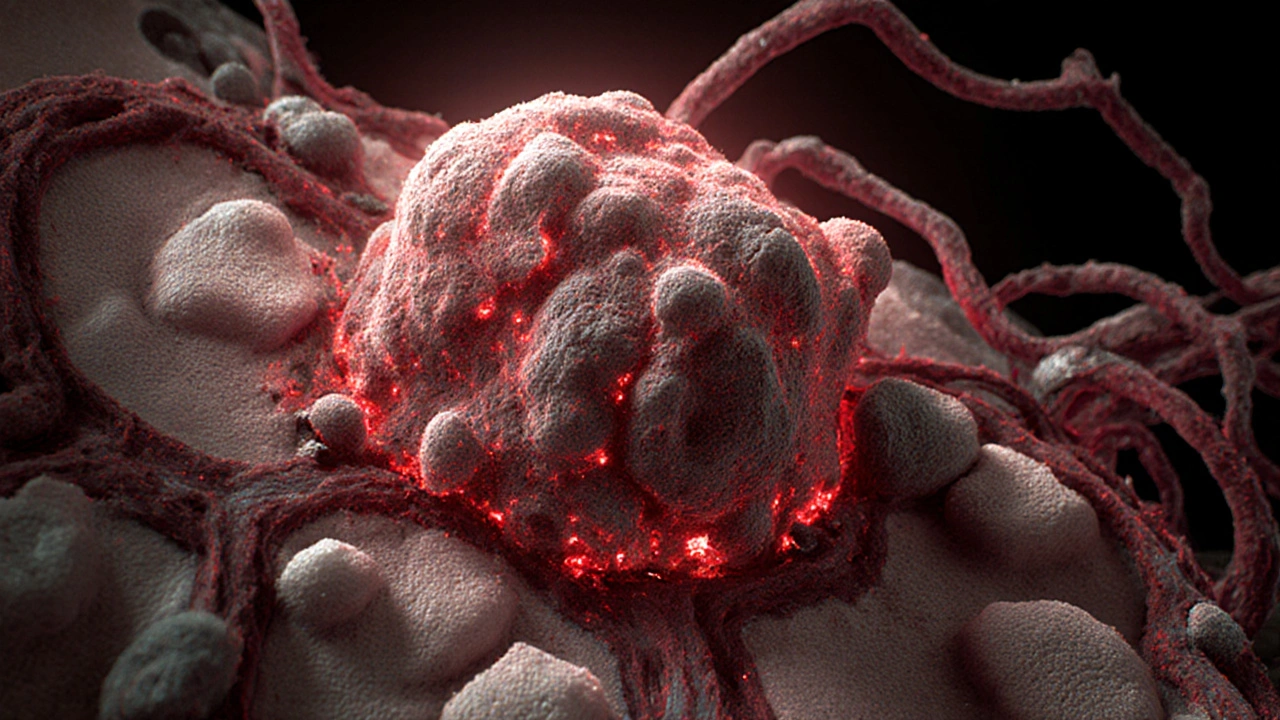Cancer Progression: What It Means and Why It Matters
When you hear cancer progression, the step‑by‑step shift from a healthy cell to a malignant tumor that invades tissue and can travel to other parts of the body. Also called tumor advancement, it is the core concept behind every cancer‑related decision you’ll read about here. cancer progression isn’t a single event; it’s a series of changes that involve genetic mutations, altered cell signaling, and the tumor’s ability to evade the immune system. Understanding this process helps you see why early detection, monitoring biomarkers, and tailored therapies matter.
Key Players in the Progression Puzzle
One of the biggest drivers of a tumor’s spread is metastasis, the escape of cancer cells from the primary site to form new colonies in distant organs. When metastasis occurs, the disease often shifts from curable to chronic, and treatment plans change dramatically. Another critical piece is biomarkers, measurable substances in blood, tissue, or imaging that indicate tumor activity or response to therapy. Doctors use biomarkers like PSA for prostate cancer or CA‑19‑9 for pancreatic cancer to track how fast the disease is moving and whether a drug is working.
Even if a tumor is caught early, it can develop treatment resistance, the ability of cancer cells to survive despite chemotherapy, targeted drugs, or radiation. Resistance often stems from the same genetic chaos that fuels progression, making it a moving target for researchers. Lifestyle factors—smoking, diet, chronic inflammation—can also tip the balance, either accelerating growth or providing windows for intervention. For instance, the posts on oral cancer signs show how a lingering toothache can be an early clue, while the melanoma article highlights how alternative therapies may complement standard care, though evidence varies.
All these entities—metastasis, biomarkers, resistance, lifestyle influences—are linked in a web of cause and effect. Cancer progression encompasses tumor growth, which requires angiogenesis (new blood vessels), which in turn creates pathways for metastasis. Biomarkers influence treatment choice, and treatment choice can shape resistance patterns. This chain of relationships forms the backbone of modern oncology and sets the stage for the articles you’ll find below.
Below you’ll discover practical guides on spotting early warning signs, navigating treatment options, and using lifestyle tweaks to support medical therapy. Whether you’re looking for the latest on melanoma alternatives, oral cancer detection, or how bone health ties into overall cancer risk, the collection gives you concrete steps and clear explanations. Dive in to see how each piece of the progression puzzle fits together and what you can do about it today.
Understanding Tumor Growth and Cancer Stages
Explore how tumor growth drives cancer progression, learn the TNM staging system, and discover what each stage means for treatment and survival.
Read more
